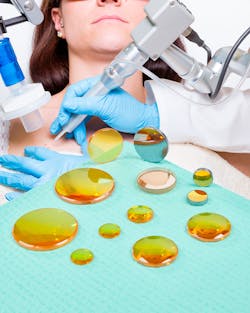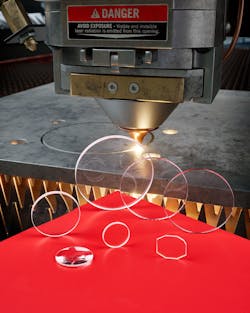Lasers are often used in medical applications such as photo rejuvenation, hair removal, and vascular and acne treatment. While lasers vary, the use of fused silica is a popular material for its low refractive index variations, leading to state-of-the-art homogeneity values, lowest birefringence values, large size capabilities, exceptional transmittance from the deep ultraviolet through the infrared region, and an ultra-low thermal expansion coefficient. All of these are critical to our customers’ demanding needs according to Corning.
Fused silica is offered in many different grades. This material offers a high-quality, non-crystalline silica glass. Recently, Laser Research Optics (LRO) of Providence, R.I. introduced a line of OEM quality, fused silica laser optics that can be ordered in custom shapes to fit a wide range of surgical instruments.
The scratch and dig numbers are unrelated two-digit numbers typically separated by a hyphen: scratch number first, followed by dig number. These numbers are determined by visually comparing the brightness of scratches and diameter of digs with those on the calibrated standard while the component and standard are each under the lighting conditions prescribed in the performance specification. The specified scratch and dig numbers indicate that the component will not have scratches brighter or digs larger than the corresponding numbers on the calibrated standard. (Credit: Venmark International)
Fused silica laser optics offer excellent transmission from UV to IR wavelengths up to approximately 2.1 microns, with a high degree of purity, and outstanding resistance to thermal shock. In addition, fused silica is highly durable and can be fabricated in a variety of custom shapes in sizes from 0.5 to 4.0 in. O.D.
Manufactured to specification, LRO fused silica laser optics have 10-5 scratch-dig surface quality on both faces (typically 80-50 scratch-dig surface quality is standard while 20-10 is considered high precision) and have an anti-reflective coating for less than 0.25% reflectance per surface at 1.080 microns. They can incorporate various mounting edge treatments and be polished to λ/10 or λ/20, as required.
Optics for laser technology will become increasingly important as cosmetic surgery in the medical field are becoming more common, and laser powers increase for use in other industries such as 3D printing and surface treatments.


